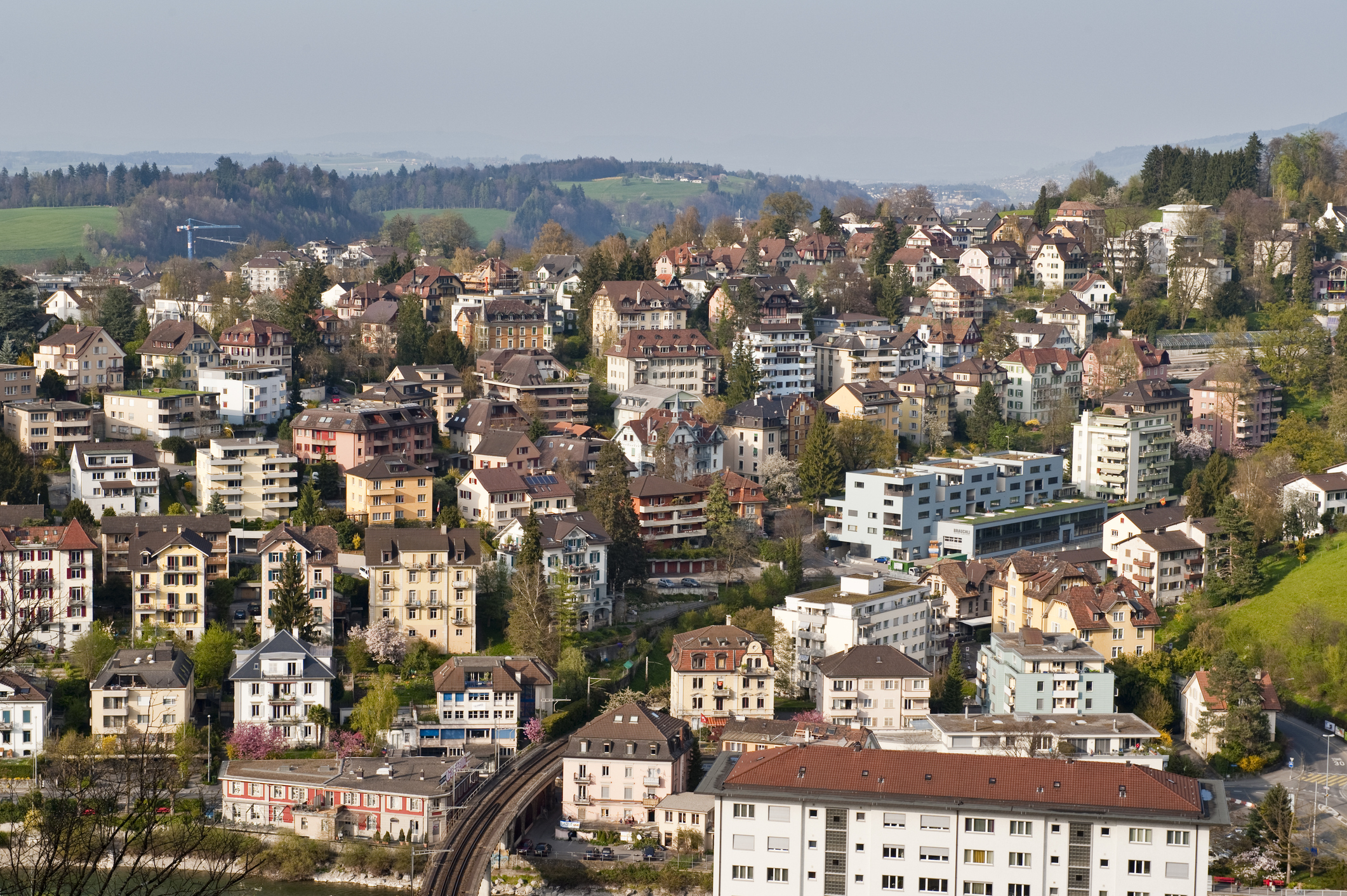These trends are not only influencing where people want to live but also how homes are designed and what features they prioritize. This article will explore how these demographic changes are impacting the Swiss housing market, from the growing need for senior-friendly accommodations to the rise of single-person households, and how these shifts may shape the future of real estate in Switzerland.
Aging Population
Switzerland’s population is aging rapidly, with a significant portion of the population now over the age of 65. This demographic trend is creating a growing demand for housing that meets the specific needs of older residents. As people age, their housing preferences often shift towards properties that offer accessibility, safety, and proximity to healthcare services.
1. Growing Demand for Accessible Housing
The increasing number of elderly individuals in Switzerland is driving demand for accessible and age-friendly housing options. Homes that are designed with features like step-free access, wider doorways, and single-level living spaces are becoming more sought after. Additionally, properties that are located near healthcare facilities, public transport, and community services are particularly attractive to older buyers and renters.
2. Impact on Property Types
This demand is influencing the types of properties being developed across the country. Developers are increasingly focusing on creating senior-friendly housing options, such as apartments with elevators, retirement communities, and homes equipped with assistive technologies. In urban areas, there is also a push towards creating mixed-use developments that integrate residential spaces with healthcare services and recreational facilities designed for seniors.
3. Regional Differences
The impact of this demographic shift varies across different regions of Switzerland. In areas with a higher concentration of elderly residents, such as rural regions and smaller towns, there is a more pronounced demand for age-friendly housing. In contrast, urban areas are seeing a balanced development that caters to both younger populations and the elderly, with a focus on creating inclusive communities that serve a diverse age group.
Urbanization
Urbanization is one of the most significant demographic trends impacting the Swiss housing market. As more people, particularly young professionals and families, move to cities in search of better job opportunities, education, and amenities, the demand for housing in urban centers continues to rise. This trend is reshaping the landscape of Swiss cities and creating new challenges for the housing market.
1. Rising Demand in Cities
The migration towards urban areas has led to a surge in demand for housing in cities like Zurich, Geneva, and Basel. Young professionals are drawn to these urban centers by the promise of career advancement, vibrant cultural scenes, and the convenience of living close to work and public transportation. Families are also attracted to cities for access to better schools and healthcare services. As a result, property prices in these areas have been steadily increasing, making urban housing more expensive and competitive.
2. Challenges for Urban Housing
The increasing demand for urban housing has created several challenges. One of the most pressing is the rising cost of living, which is pricing many people out of the market, particularly in the most sought-after neighborhoods. This has led to a growing need for affordable housing options, as well as innovative solutions to make urban living more accessible.
Another challenge is the pressure on infrastructure and resources. As more people move to cities, the demand for public services, transportation, and utilities increases. This puts a strain on existing systems and requires significant investment in urban planning and development to accommodate the growing population.
3. Urban Development Trends
In response to these challenges, cities across Switzerland are adopting new urban development strategies. There is a growing focus on mixed-use developments that combine residential, commercial, and recreational spaces, making cities more livable and reducing the need for long commutes. High-density housing projects are also becoming more common, with an emphasis on efficient use of space and sustainable building practices.
Cities are also investing in improving public transportation and green spaces to enhance the quality of urban life. The goal is to create urban environments that are not only attractive to new residents but also sustainable and resilient in the face of future growth.
Household Changes
Switzerland is witnessing significant changes in household compositions, which are having a profound impact on the housing market. As traditional family structures evolve and more people opt for independent living, the demand for different types of housing is shifting. This trend is particularly evident in the rise of single-person households, which is creating new challenges and opportunities for the real estate sector.
1. Increase in Single-Person Households
One of the most notable demographic shifts is the rise in single-person households. This trend is driven by various factors, including higher rates of singlehood, delayed marriage, and an aging population where many elderly individuals live alone. In urban areas, particularly, young professionals and retirees are increasingly choosing to live independently, leading to a growing demand for smaller, more manageable living spaces.
2. Impact on Housing Design
The increase in single-person households is influencing how housing is designed. Developers are responding by creating more compact apartments and studio units that cater to individuals who prioritize convenience, location, and affordability over space. These units are often designed with efficiency in mind, featuring multifunctional furniture and open floor plans that maximize the use of limited space.
There is also a growing interest in co-living spaces, where residents have private rooms but share common areas like kitchens and living rooms. This concept is gaining popularity among younger demographics in cities, offering a balance between privacy and social interaction, often at a lower cost than traditional apartments.
3. Shifts in Homeownership
Changes in household compositions are also affecting homeownership rates. With more people living alone, especially in cities, there is a noticeable trend towards renting rather than buying. Renting offers flexibility, which is attractive to those who may not be ready or able to commit to a long-term property purchase. This trend is reshaping the rental market, with increased demand for high-quality, well-located rental properties that meet the needs of single occupants.
Long-Term Market Effects
The demographic trends shaping Switzerland’s housing market today are likely to have profound long-term effects on the real estate landscape. As the population continues to age, urbanize, and form smaller households, the types of properties in demand, the way cities develop, and the overall structure of the housing market will continue to evolve.
1. Reshaping the Real Estate Landscape
The ongoing shift towards urban living and the increasing demand for smaller, more accessible housing options are expected to reshape the Swiss real estate market over the coming decades. Urban areas will likely continue to see a concentration of development, with a focus on high-density housing that maximizes the use of limited space. This could lead to a more vertical expansion of cities, with taller buildings becoming more common to accommodate growing populations.
In contrast, rural and suburban areas might see slower growth or even a decline in demand, particularly as younger generations gravitate towards cities. However, these areas could still attract older populations looking for quieter, more spacious living environments, especially if they offer accessible amenities and healthcare services.
2. Shifts in Property Values
As demand increases in urban centers, property values in these areas are likely to continue rising. This could exacerbate issues of affordability, particularly for first-time buyers and lower-income households. In response, there may be a greater push for affordable housing solutions, such as government-subsidized housing or incentives for developers to build more cost-effective properties.
On the other hand, the demand for age-friendly housing could drive up property values in certain suburban and rural areas that cater to the needs of older residents. Homes that offer accessibility features and proximity to healthcare services could become particularly valuable as the population ages.
3. Opportunities for Developers and Investors
For developers and investors, these demographic trends present both challenges and opportunities. Those who can anticipate and respond to the changing demands of the market—such as the need for smaller, more efficient urban living spaces or age-friendly housing—are likely to see strong returns on their investments. Additionally, innovative housing solutions, such as co-living spaces or modular homes, could become more popular as people seek flexible, affordable housing options.
Investors might also find opportunities in the rental market, particularly in urban centers where the demand for rental properties is expected to remain strong. As more people choose to rent rather than buy, especially in cities, well-located, high-quality rental properties could become increasingly valuable assets.



